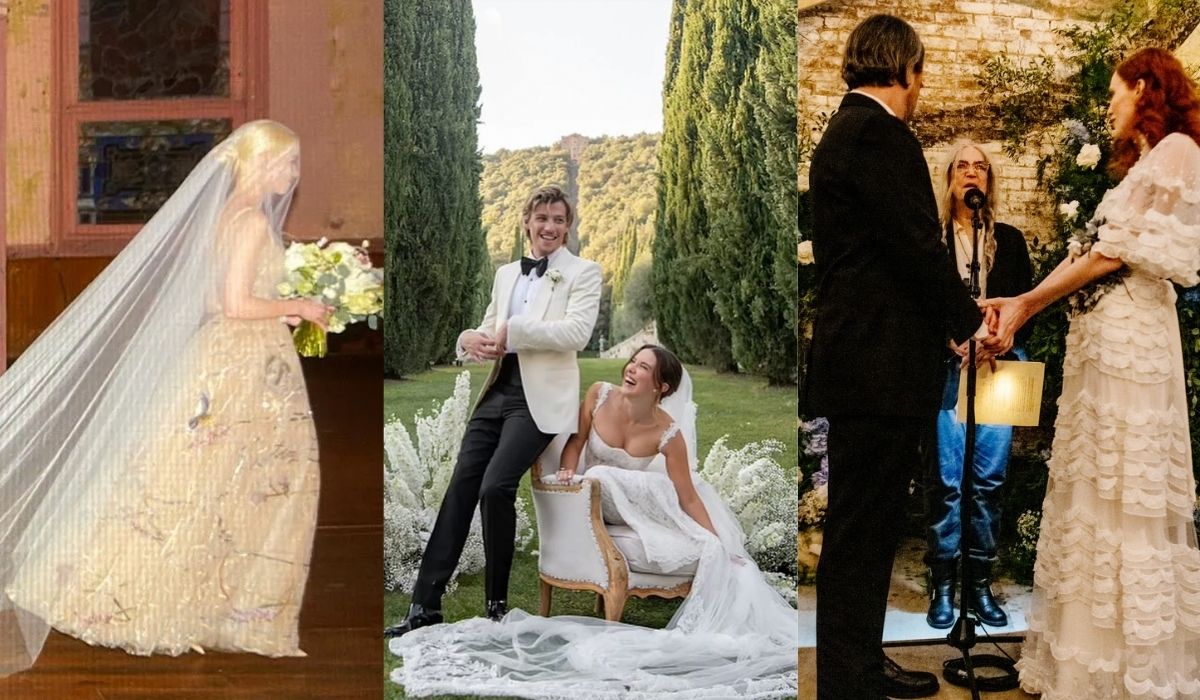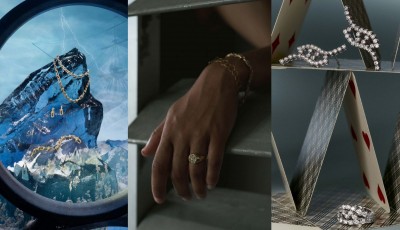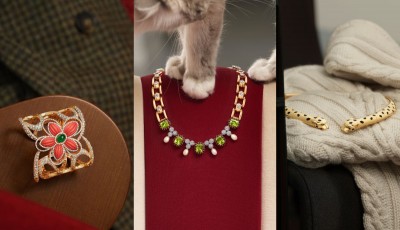The New Face of Bridal
The bridal world is a universe where details make all the difference. Every choice—from the dress to the jewelry, the location to the bouquet—is an expression of style and authenticity.
Just ten years ago, marriage seemed like an outdated practice, a ritual that had lost its symbolic power and was increasingly seen as a mere formality—a social convention many avoided, believing happiness was possible without a signed piece of paper or a white gown. Today, surprisingly, things seem to have changed. Saying “I do” at the altar is regaining its sense of sacredness; we are starting to believe once again in the magic of those words.
A glance at weddings celebrated in 2024 shows this shift. It has been a year of high-profile nuptials, with celebrities setting trends that inspire couples worldwide. From Millie Bobby Brown and Jake Bongiovi’s intimate Italian ceremony to the artistic union of Karen Elson and Lee Foster, officiated on the rooftops of New York’s Electric Lady Studios by singer Patti Smith, to Lana Del Rey’s wedding to Jeremy Dufrene—far removed from the entertainment world—celebrity weddings have made waves, defining new inspirations for future brides and grooms.
One particularly striking example is Anya Taylor-Joy, the actress of The Queen’s Gambit, who kept her marriage to musician Malcolm McRae a secret for two years. The ceremony, held on April 1, 2022, was only revealed in 2024 when the actress shared photos and videos on social media. The secrecy surrounding the wedding, coupled with its eventual reveal, added an aura of exclusivity and mystery, accentuated by its gothic and horror-inspired atmosphere. This unique approach blended romance with dark aesthetics, breaking away from traditional expectations and paving the way for original weddings that prioritize individuality.
This growing trend for bespoke ceremonies feeds the vitality of the bridal industry, a sector that remains robust and constantly evolving. The numbers are clear: in a steadily growing global market, the United States and China are leading, with projected revenues of $27 billion and $6.8 billion respectively by 2026. Beyond the figures, the most intriguing aspect is how the industry caters to an increasingly discerning and diverse audience.
Today, weddings aim to fully reflect the identity and personality of the couple. Bridal looks mirror the complexity of the contemporary woman: regal yet minimalist, glamorous yet authentic. The traditional princess gown is giving way to architectural silhouettes, sustainable fabrics, and modern tailoring. Styles range from flowing dresses with plunging backs to dramatic voluminous creations, but always with an emphasis on comfort, as today’s bride values freedom of movement.
Alongside the dress, jewelry plays a crucial role, especially in cultures where it signifies more than mere adornment. In India, for example, 22-karat gold jewelry holds profound symbolic meaning, embodying traditions and ancestral values. In the West, trends lean toward minimalist designs, illuminated by the brilliance of diamonds and platinum or accented by alternative gemstones such as sapphires, emeralds, or morganites. Global influences are also making their mark: vintage styles like Art Deco and Victorian are captivating brides drawn to their retro charm.
This evolution extends to other accessories, with a rising demand for unique details: hand-embellished shoes, customized veils, and fashion-forward alternatives such as headbands, fascinators, or hooded capes. Every element is designed to tell a story—the couple’s story—making their celebration of love truly unique and unforgettable.
Even wedding bands reflect this shift, becoming increasingly personalized and contemporary, offering couples a wide range of options to express their love with authenticity and sophistication.
A glance at weddings celebrated in 2024 shows this shift. It has been a year of high-profile nuptials, with celebrities setting trends that inspire couples worldwide. From Millie Bobby Brown and Jake Bongiovi’s intimate Italian ceremony to the artistic union of Karen Elson and Lee Foster, officiated on the rooftops of New York’s Electric Lady Studios by singer Patti Smith, to Lana Del Rey’s wedding to Jeremy Dufrene—far removed from the entertainment world—celebrity weddings have made waves, defining new inspirations for future brides and grooms.
One particularly striking example is Anya Taylor-Joy, the actress of The Queen’s Gambit, who kept her marriage to musician Malcolm McRae a secret for two years. The ceremony, held on April 1, 2022, was only revealed in 2024 when the actress shared photos and videos on social media. The secrecy surrounding the wedding, coupled with its eventual reveal, added an aura of exclusivity and mystery, accentuated by its gothic and horror-inspired atmosphere. This unique approach blended romance with dark aesthetics, breaking away from traditional expectations and paving the way for original weddings that prioritize individuality.
This growing trend for bespoke ceremonies feeds the vitality of the bridal industry, a sector that remains robust and constantly evolving. The numbers are clear: in a steadily growing global market, the United States and China are leading, with projected revenues of $27 billion and $6.8 billion respectively by 2026. Beyond the figures, the most intriguing aspect is how the industry caters to an increasingly discerning and diverse audience.
Today, weddings aim to fully reflect the identity and personality of the couple. Bridal looks mirror the complexity of the contemporary woman: regal yet minimalist, glamorous yet authentic. The traditional princess gown is giving way to architectural silhouettes, sustainable fabrics, and modern tailoring. Styles range from flowing dresses with plunging backs to dramatic voluminous creations, but always with an emphasis on comfort, as today’s bride values freedom of movement.
Alongside the dress, jewelry plays a crucial role, especially in cultures where it signifies more than mere adornment. In India, for example, 22-karat gold jewelry holds profound symbolic meaning, embodying traditions and ancestral values. In the West, trends lean toward minimalist designs, illuminated by the brilliance of diamonds and platinum or accented by alternative gemstones such as sapphires, emeralds, or morganites. Global influences are also making their mark: vintage styles like Art Deco and Victorian are captivating brides drawn to their retro charm.
This evolution extends to other accessories, with a rising demand for unique details: hand-embellished shoes, customized veils, and fashion-forward alternatives such as headbands, fascinators, or hooded capes. Every element is designed to tell a story—the couple’s story—making their celebration of love truly unique and unforgettable.
Even wedding bands reflect this shift, becoming increasingly personalized and contemporary, offering couples a wide range of options to express their love with authenticity and sophistication.






